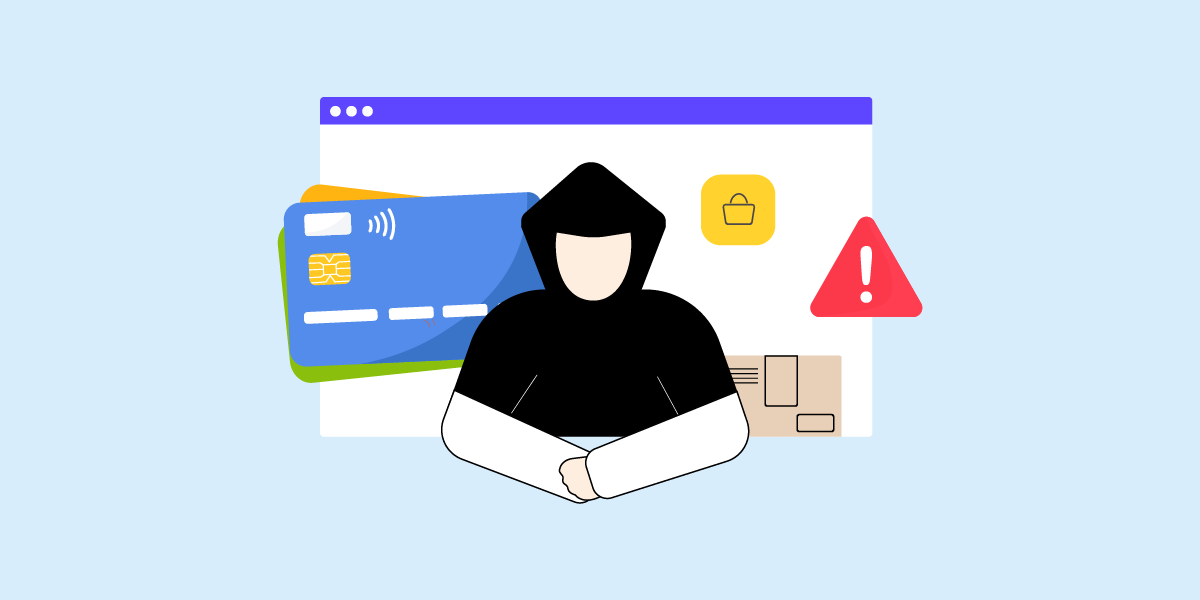
Credit card fraud is the unauthorized use of a credit card or card information to make purchases or withdraw funds. Fraudsters aim to steal money from the cardholder or the issuing bank. It results in financial loss for individuals and institutions, damaged credit scores and a breach of personal information.
How credit card fraud occurs
- Data Breaches: Fraudsters may gain access to personal data through data breaches, where large amounts of customer information, including credit card numbers are stolen from companies or databases.
- Phishing: Fraudsters send fake emails, messages or phone calls to trick individuals into providing their credit card information.
- Hacking: Cybercriminals use malware or hack online accounts and systems to steal credit card information.
- Lost or Stolen Cards: Physical cards that are lost or stolen can be used by criminals to make unauthorized transactions.
- Skimming Devices: Fraudsters will attach small devices that can skim the data off credit cards in places where people will normally swipe or insert their cards. Their favorite places to plant the skimming devices include the ATM card slots or the gas station pumps.
Common type of credit card fraud
- Card Not Present (CNP) Fraud: Occurs when a fraudster uses stolen card details to make online, phone or mail purchases without needing the physical card.
- Lost or Stolen Card Fraud: If a credit card is physically stolen or lost, the criminal can use it for fraudulent transactions until it’s reported and blocked.
- Counterfeit Card Fraud: Involves creating clone credit cards using stolen card information through skimming or hacking. These cards are then used for unauthorized purchases.
- Account Takeover: A fraudster gains access to an individual’s credit card account, changes the account’s login details and uses the account to make purchases.
What to do if you suspect credit card fraud
- Contact Your Bank or Card Issuer: Report the suspicious activity immediately to your credit card issuer. They can freeze or block the card to prevent further unauthorized transactions.
- Review Statements: Check your credit card statements for any unfamiliar transactions. Go back several months to ensure that no fraudulent activity occurred before you noticed.
- Dispute Unauthorized Transactions: File a dispute for any charges you didn’t make. Your credit card issuer may remove the charges and start an investigation.
- Change Online Account Passwords: If you believe your online credit card account has been compromised, immediately change your passwords to secure the account.
How to detect it
- Unfamiliar Charges: Regularly check your credit card statements and look for unfamiliar or suspicious charges, even small ones. Fraudsters sometimes test stolen cards with small transactions (a.k.a. carding attempts).
- Notifications from Your Bank: Many banks send real-time alerts for unusual spending patterns or transactions from unfamiliar locations. Take these alerts seriously.
- Card Declines: A decline on your card when you have sufficient credit may signal that your card has been compromised and has been used in a fraudulent transaction.
- Requests for Password Resets: If you receive unexpected requests for password resets on your online credit card account, this could be a sign someone is trying to access your account.
How to prevent it
- Enable Two-Factor Authentication (2FA): For online accounts associated with your credit cards, enable 2FA where available. This adds an extra layer of security by requiring a code sent to your phone or email to verify your identity.
- Use Strong, Unique Passwords: Avoid reusing passwords across multiple accounts, especially for financial institutions.
- Regularly Monitor Your Statements: Review your credit card transactions frequently, either through your bank’s app or statement, to spot any irregularities quickly.
- Beware of Phishing Scams: Be cautious of unsolicited emails, texts or phone calls asking for your credit card information. Always verify the authenticity of the sender before sharing any details.
- Employ Fraud Detection Tools: Online merchants can play their parts by implementing advanced Fraud Detection Software like FraudLabs Pro, to automatically detect and block suspicious transactions. Assign fraud rules or blacklist to transactions based on factors like location, amount and past purchase behavior.
- Use Chip-and-PIN card: Request your bank to issue a Chip-and-PIN (a.k.a. EMV) credit card if your bank has this option. It’s harder to guess the credit card PIN versus the signature card where the signature is visible at the rear of the card. In addition, Chip-and-PIN cards are much harder to clone than plain old magnetic strip cards.
Conclusion
Credit card fraud remains a significant concern in today’s digital landscape. By understanding how fraud occurs and being proactive in monitoring and securing financial information, individuals and businesses can mitigate risks. Employing best practices like secure passwords, two-factor authentication and the use of fraud detection tools like FraudLabs Pro are essential steps in preventing and identifying fraudulent activities.
Secure Transactions, Seamless Business
Say goodbye to fraud worries! Secure your online store with FraudLabs Pro now.